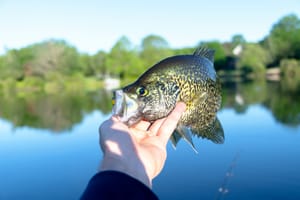Crappie fishing is a beloved pastime for many anglers across the country. Among the panfish family, two species stand out: the white crappie and the black crappie. While they share many similarities, there are distinct differences that can help fishermen tell the difference and improve their catch rates. This article will delve into the nuances of white crappie vs black crappie, from physical characteristics to habitat preferences, providing a comprehensive understanding of these popular sport fish.
Key Takeaways:
- Understand the key differences between white crappie and black crappie.
- Learn about the preferred habitats and behaviors of each species.
- Gain practical tips for identifying and catching both types of crappie.
Understanding the Crappie Family
The crappie, part of the sunfish family, is a sought-after fish for both recreational and competitive anglers. The white and black crappie are closely related but have distinct features that set them apart, including differences in their color patterns and habitat preferences. Both species, black and white crappie, are native to North America and are commonly found in freshwater lakes, ponds, and rivers, thriving in environments that offer abundant cover and food sources.
hey are known for their delicious taste and the fun challenge they present when caught, making them a favorite target for anglers seeking both the thrill of the chase and a rewarding catch. The adaptability of the black and white crappie to various aquatic environments contributes to their widespread distribution and popularity among fishing communities.
Physical Characteristics: White Crappie
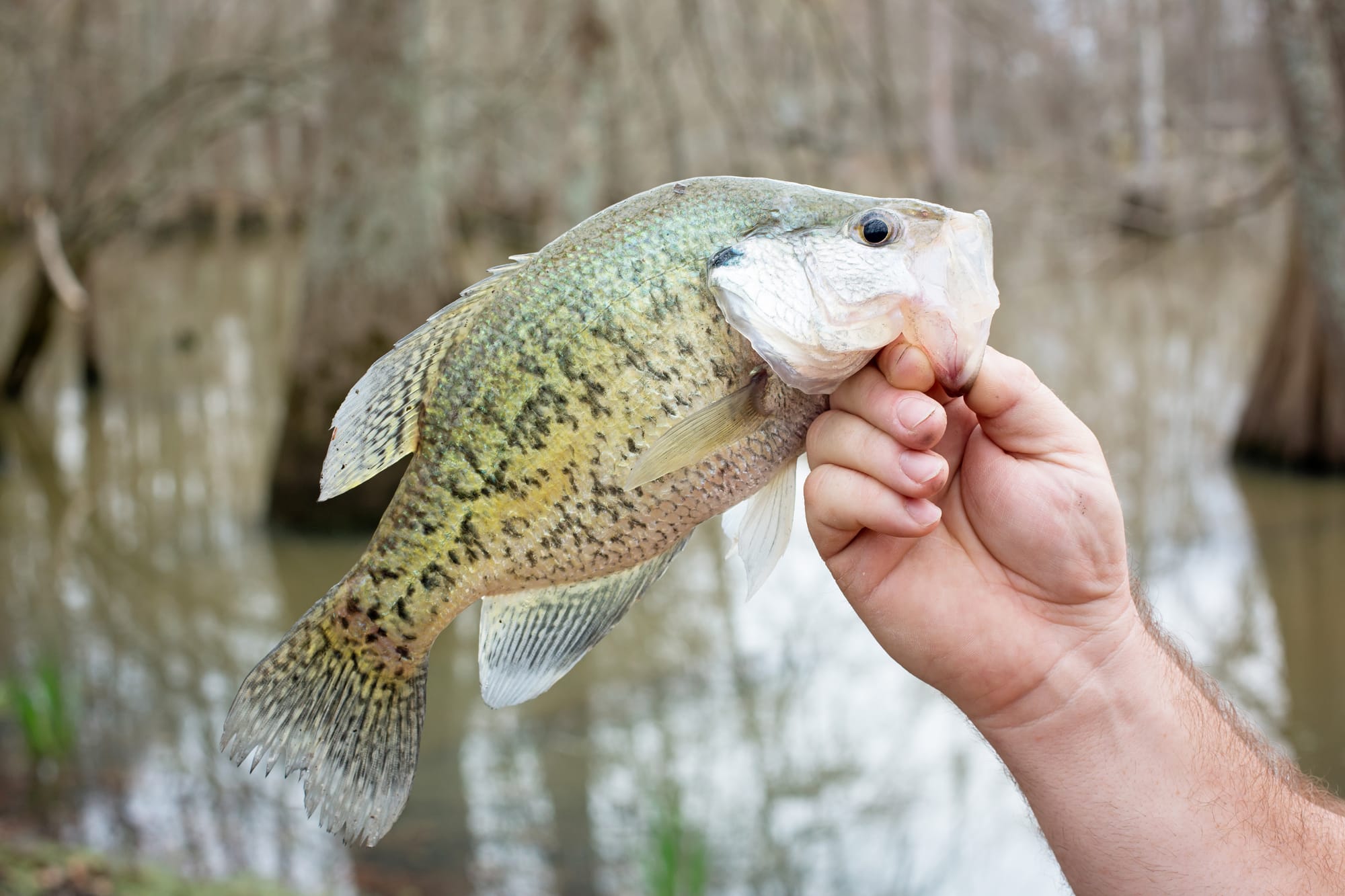
White crappies, scientifically known as Pomoxis annularis, are characterized by their silvery-green to yellowish bodies with distinct vertical bars or stripes. Their body shape is slightly elongated with a high back, and they possess dorsal and anal fins that are almost identical in shape and size. The white crappie tends to have fewer spines in the dorsal fin, typically five or six, which is a key identifier when comparing them to black crappies.
Physical Characteristics: Black Crappie
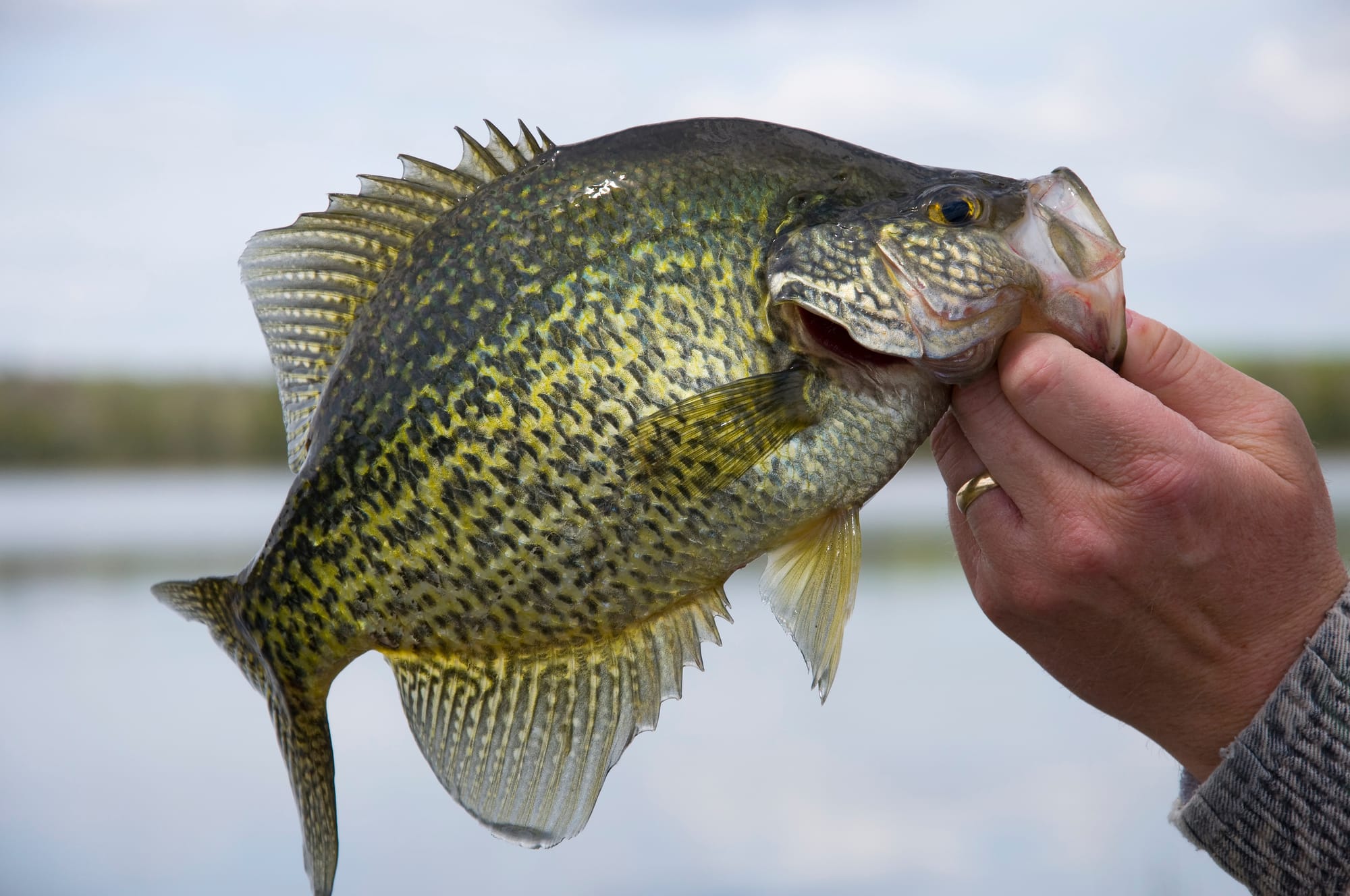
Black crappies, or Pomoxis nigromaculatus, exhibit a darker coloration with irregular dark blotches across their bodies. Unlike the white crappie, black crappies have a more rounded body shape and feature seven or eight spines in their dorsal fins. The markings on the black crappie are more random and do not form the vertical bars seen on their white counterparts. This speckled appearance is often the first clue for anglers trying to distinguish between the two species.
Habitat Preferences: White Crappie
White crappies are more adaptable to various water conditions, thriving in both clear and murkier waters. They prefer warmer water temperatures and are often found in backwater pools, slow-moving rivers, and lakes with moderate vegetation. During spawning season, white crappies move to shallower waters, where they can be found around submerged structures like logs or docks.
Habitat Preferences: Black Crappie
Black crappies are more often associated with clearer water and are more sensitive to turbidity than white crappies. They favor areas with abundant aquatic vegetation and are typically found in deeper, cooler parts of a water body. Black crappies also seek out structures, but they are more likely to be found suspended in the water column, especially in open water or around submerged trees and brush piles.
Feeding Habits: White Crappie
White crappies have a diverse diet that includes small fish, crustaceans, insects, and zooplankton. They are known to be less picky eaters compared to black crappies and can often be caught using a variety of baits and lures. During the day, white crappies tend to feed in more open areas, making them easier targets for anglers.
Feeding Habits: Black Crappie
Black crappies are primarily sight feeders and rely on clear water to spot their prey. Their diet is similar to that of white crappies, but they have a preference for minnows and small fish. Black crappies are more likely to be caught using live bait, such as fathead minnows, or small jigs that mimic the appearance of their preferred food sources.
Spawning Behavior: White Crappie
The spawning season for white crappies occurs when water temperatures reach about 56-60°F. Female white crappies can produce an impressive number of eggs, ranging from 5,000 to 30,000 per spawning cycle. They prefer to lay their eggs in shallow water on sandy or muddy bottoms, often near vegetation or other structures that provide cover.
Spawning Behavior: Black Crappie
Black crappies spawn slightly later than white crappies, with their spawning season kicking off when water temperatures are between 58-64°F. Female black crappies also produce a large number of eggs, similar to white crappies. They tend to spawn in slightly deeper water than white crappies and are more selective about the substrate, often choosing gravel or vegetated areas.
Angling Tips: Catching White Crappie
When targeting white crappies, anglers should focus on areas with moderate vegetation and structures like fallen trees or docks. Using light tackle and small jigs or minnows can be effective, especially when fished near the bottom or around cover where white crappies are likely to be feeding or hiding. It's been observed that white crappie tend to prefer clearer waters with less turbidity, which can influence their feeding patterns and habitat selection.
Additionally, these fish tend to move into shallower waters during the spawning season in the spring, making them more accessible to anglers. Understanding these tendencies can help fishermen adapt their strategies to the white crappie's natural behaviors, increasing the likelihood of a successful catch.
Angling Tips: Catching Black Crappie
For black crappie fishing, clear water and abundant vegetation are key. Anglers should use small jigs or live crappie minnows and fish in or near the vegetation where black crappies are hunting. It's also beneficial to fish during low-light conditions, such as dawn or dusk, when black crappies are more active. To increase your chances of success, consider using techniques like slow trolling or drifting near vegetated areas, as black crappies often move slightly out of cover to feed.
Experimenting with different colors and sizes of jigs can also be effective, as these fish can be particular about their prey. Paying attention to water temperature is crucial, as black crappies tend to spawn in warmer waters, leading them to be more concentrated in specific areas during the spring.
Conservation and Management
Both white and black crappies are important to local fisheries and are managed to ensure sustainable populations. Regulations may include size limits, bag limits, and seasonal closures to protect the species during spawning. Anglers are encouraged to practice catch and release, especially with larger breeding individuals, to help maintain healthy crappie populations.
Hybrid Crappie: A Unique Twist
Hybrid crappie, a cross between white and black crappies, are occasionally found in the wild. These hybrids often exhibit a mix of characteristics from both parent species, making identification a challenge. While not as common as pure species, hybrid crappies add an interesting dimension to crappie fishing and biodiversity.
Final Thoughts on Crappie Fishing
Crappie fishing is a rewarding experience that requires knowledge of the species and their habits. By understanding the differences between white crappie and black crappie, anglers can refine their techniques and increase their chances of a successful catch. Whether fishing for fun or competition, the pursuit of crappies is sure to provide an enjoyable and memorable experience on the water.
Seasoned anglers know that adapting to the subtle nuances of each species’ behavior—especially in response to changes in weather, water temperature, and time of day—can lead to more fruitful outings. Moreover, the practice of catch and release, particularly during spawning seasons, helps ensure future populations thrive, allowing everyone to continue enjoying the sport for years to come.
Summary
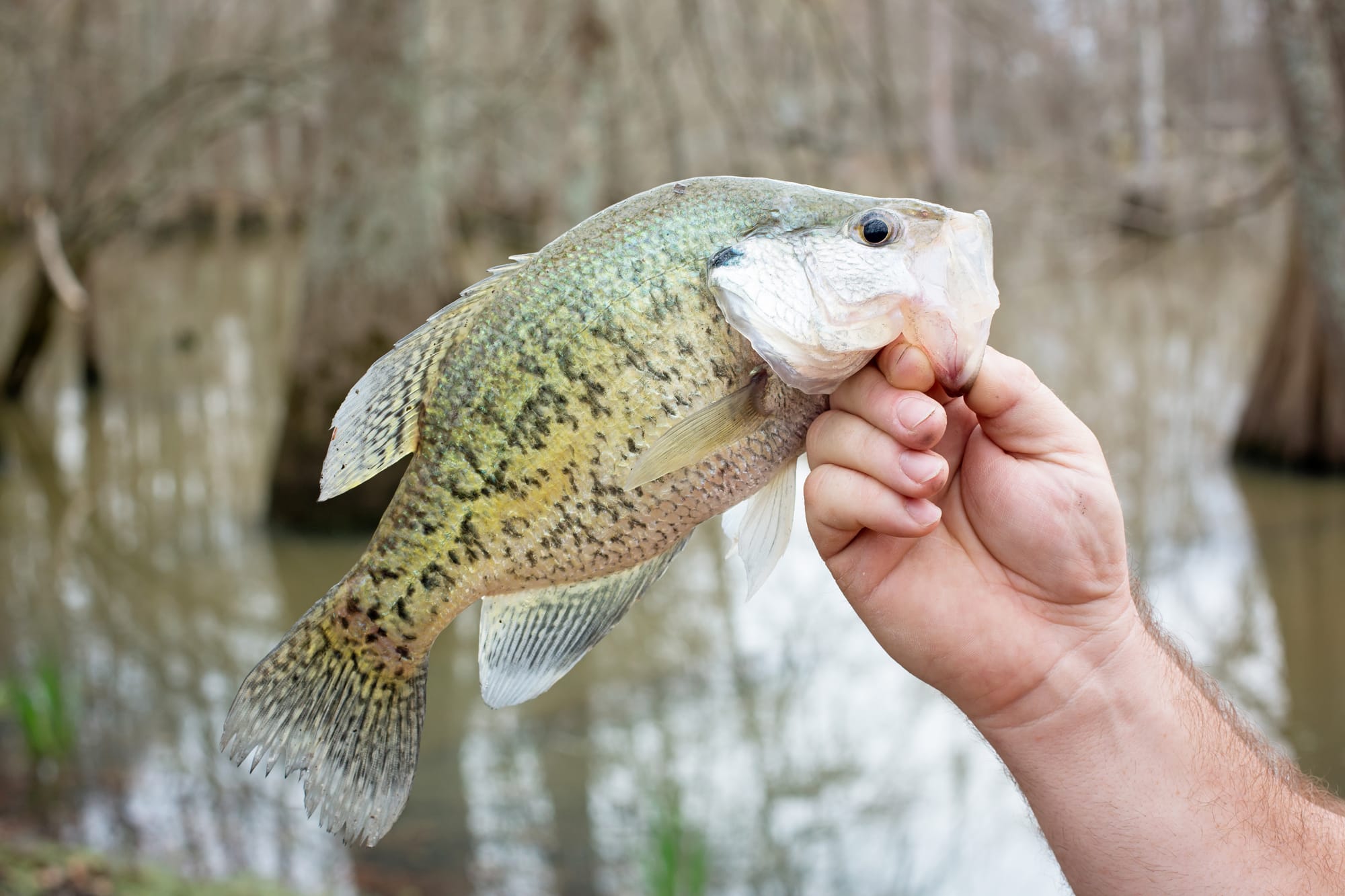
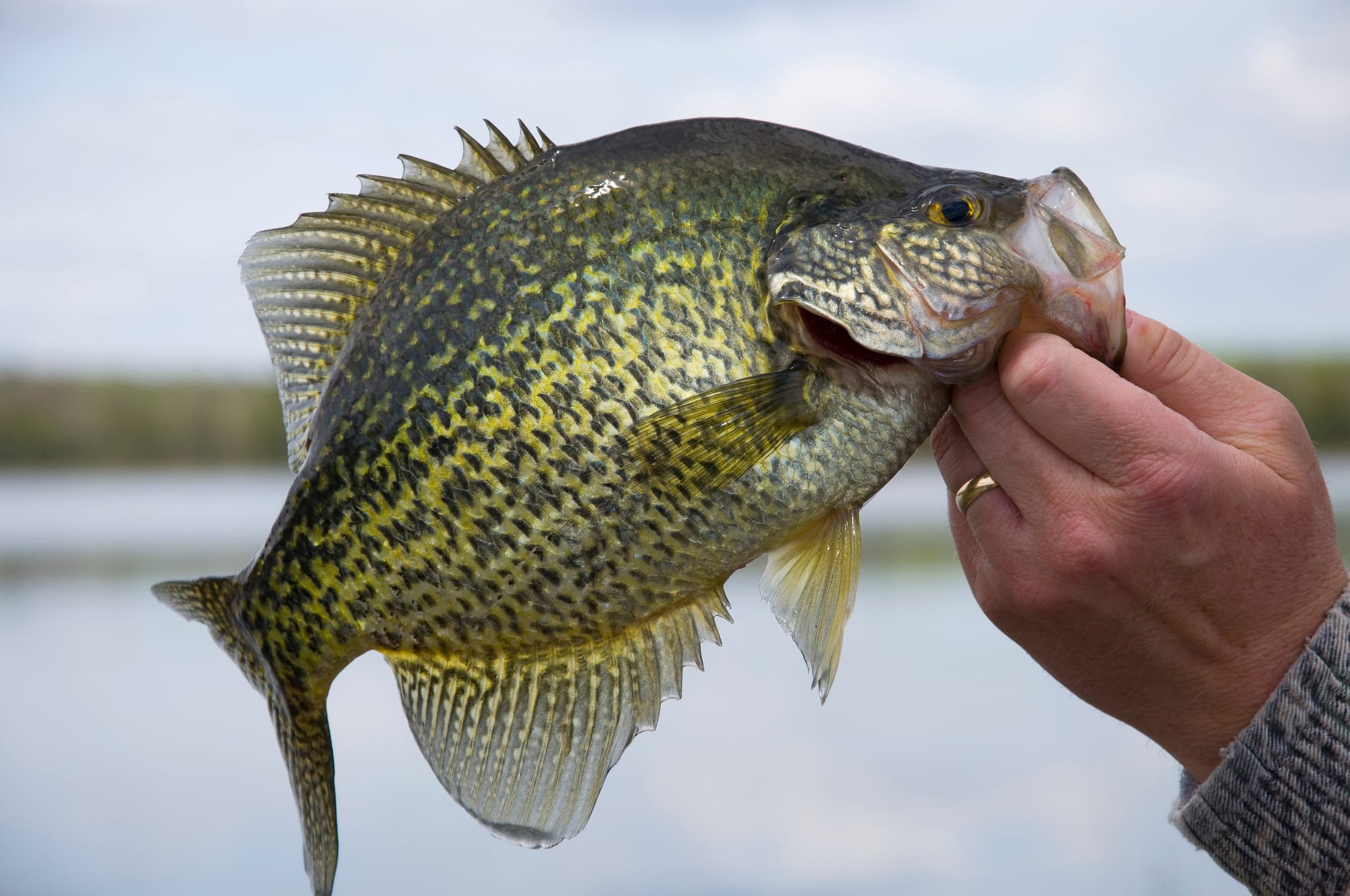
In summary, black and white crappie are two distinct species with unique characteristics and behaviors. White crappies have vertical bars and fewer dorsal fin spines, while black crappies feature irregular dark blotches and more dorsal fin spines. Their habitats differ, with white crappies being more tolerant of murkier water and black crappies preferring clearer water with more vegetation. Understanding these differences can greatly enhance an angler's ability to identify and catch these popular sport fish. Don't miss our must-read feature "10 Must-Have Crappie Jigs That Will Have You Reeling In Slabs Like a Pro" to elevate your crappie fishing game!
FAQ Section
How can I tell the difference between a white and black crappie?
Look for the key differences in body markings and dorsal fin spines. White crappies have vertical bars and 5-6 dorsal fin spines, while black crappies have irregular dark blotches and 7-8 dorsal fin spines.
What is the best bait to use for crappie fishing?
Both white and black crappies can be caught using small jigs, minnows, and other live baits. The choice of bait may depend on the crappie's diet preferences and the clarity of the water.
When is the best time to fish for crappies?
The best time for crappie fishing is during their spawning season, which occurs in spring when water temperatures are between 56-64°F. Additionally, fishing during low-light conditions, such as early morning or late evening, can be more productive.


